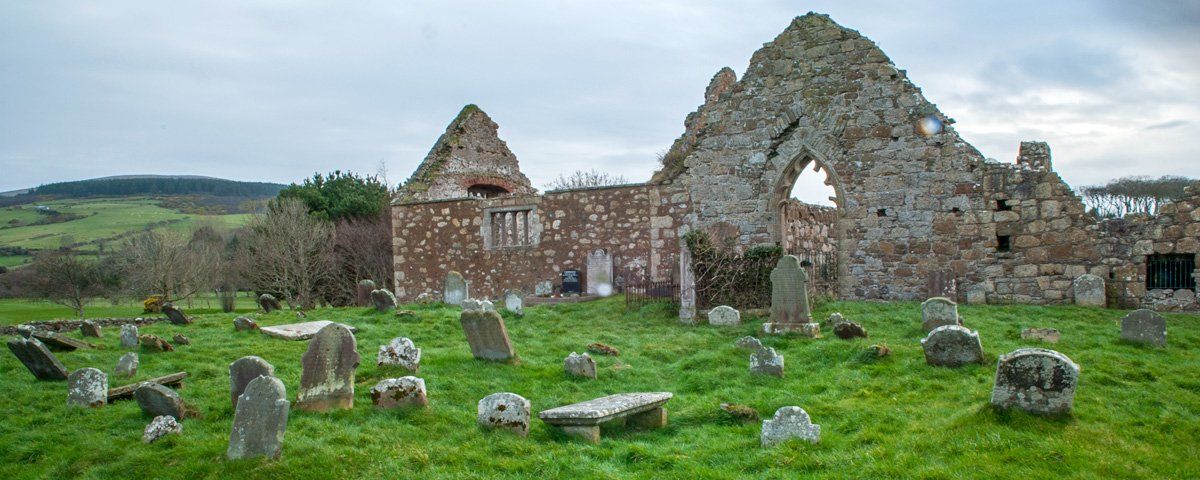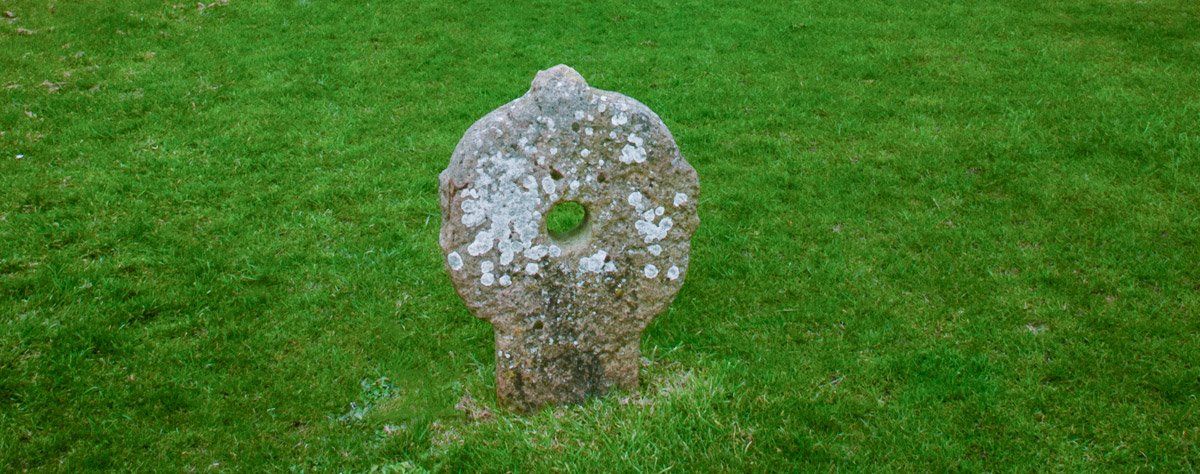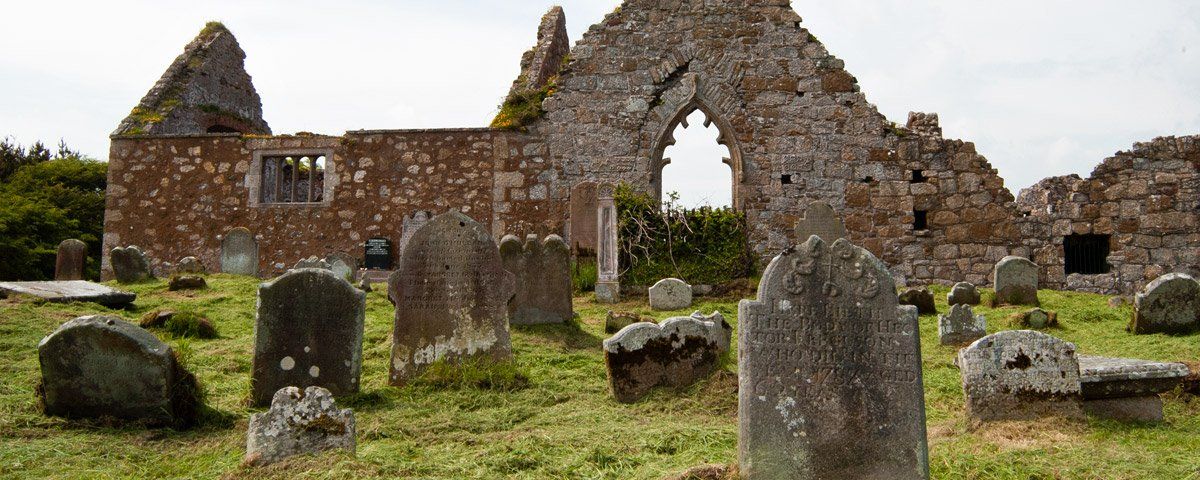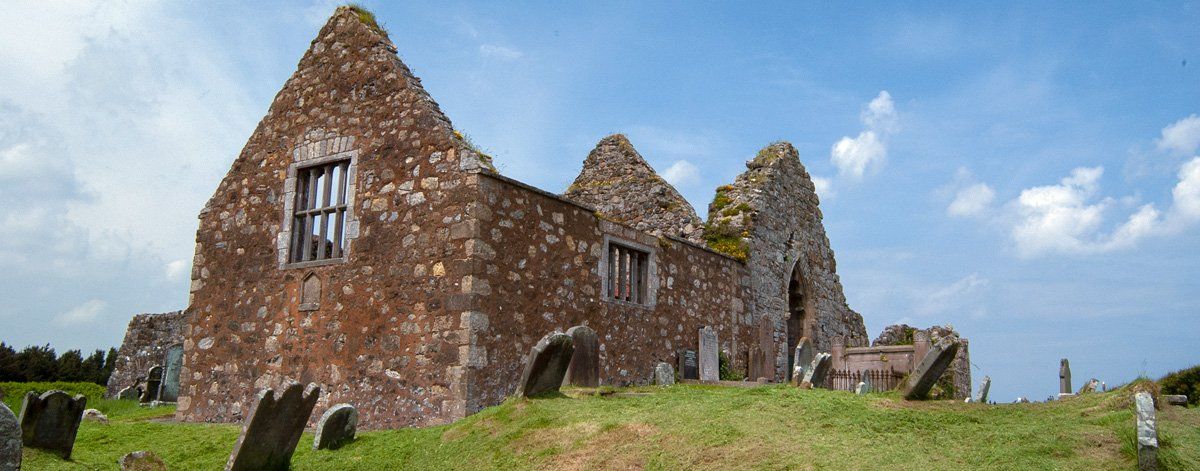Bonamargie Friary is one of the finest ruins along the north coast and was originally thatched, the ruins consist of a chapel, vaults, gatehouse, cloisters, living quarters and a graveyard. Some accounts date this Third Order Franciscan Friary to circa 1500 but it was perhaps built slightly earlier around the circa 1480. The Franciscans first arrived in Ireland in 1226 and over a decade created such an impression that many local rulers provided for them in their territories and funded monastic settlements. For the first hundred years, the Franciscans remained relatively small due to factors including politics, warfare and the Black Death. In the late thirteenth century, the Third Order was founded in Ireland. The Order flourished due in part to the secular nature of Gaelic rule at the time, certainly the dominance of that rule in the north and west after the Norman conquest aided the protection and spread of monks.
The MacQuillen family who can be traced to the Norman de Mandevilles, are accredited with founding Bonamargie Friary, it later came into the possession of the MacDonnells when Sorley Boy MacDonnell defeated the MacQuillens and effectively became ' Lord of the Route'. Several of the Earls of Ulster are interred in the friary including Sorley Boy MacDonnell. The friary became a focal point during the first half of the fifteenth century for missionary work to Scotland. In circa 1600 there were said to have been only twelve priests left in Scotland and the religious faith was in decline. Unlike the north and west of Ireland, the reformation by King Henry had a dramatic effect on Catholicism throughout Scotland, concern about this led to the Catholic Church creating a mission to re-establish itself.
They turned to the Irish Franciscans who carried out extensive missionary work in Scotland between 1619-47. Bonamargie Friary was granted to members of the First Order of Franciscans in circa 1626 as a rest house for those doing missionary work in the Highlands and Isles. (Officially granted to the First Order in 1687). During 1639 Bonamargie became a refuge for Scots men and women turning and returning to the Catholic faith. In 1639 there are accounts of the Franciscan Bishop of Down and Connor Bonaventure Magennis confirming nearly seven hundred people from Scotland in Bonamargie and in 1640, Father Hegarty, guardian of the friary, informed the Vatican that over a thousand people had been reconciled with the Church at Bonamargie.
The friary was in use up until the early sixteenth century, the last friars leaving in 1790. After this time, local stories tell of a Julia MacQuillen living in the monastery, she was known as the black nun of Bonamargie and is believed to have prophesied many events, some of which came true, others are still outstanding. Other stories tell of her being murdered on the stone stairs leading up to the second floor of the friary and that she still haunts these steps at night, a small cross (hole-stone) with a hole through the centre near the west gable of the chapel is believed to mark her grave. Another story tells of the friars, before fleeing from the friary during one of the many raids, burying the friary's valuables 'at the furthest reach of the light from a candle burning in the east window of the chapel'. The friary is steeped in a wealth of history from being attacked, burnt to it being used as a billet for soldiers and stables for horses.
To the left of the main Friary is a small lodge house, in 1822 a small oak chest was found in the chimney which contained manuscripts in illuminated Latin script believed to have been written in the twelfth century and part of the theological work of St. Thomas Aquinas (1224-74) who belonged to the monastery of St. Anthony of Delestmon. St. Thomas Aquinas was of the Dominican Order and travelled widely during his life, he was considered one of the great Christian philosophers; two of his most famous works were the 'Summa Theologiae' and the 'Summa Contra Gentiles', he was prolific in the amount of work he produced during his lifetime.
It is known that he was a close friend of a Franciscan monk called Bonaventure who later in 1237 became the minister general of the Franciscan Order. They studied together in Paris and received their Doctorates in Theology at the same time. Though, how his work if indeed it was his work, arrived to be in Bonamargie Friary is still a mystery. In Bonamargy you will find the graves of seaman from HMS Racoon and HMS Viknor. HMS Racoon was lost at the Garvin Isles, Donegal and HMS Viknor struck a mine and sank off Tory Island - both sunk with the loss of all aboard.






